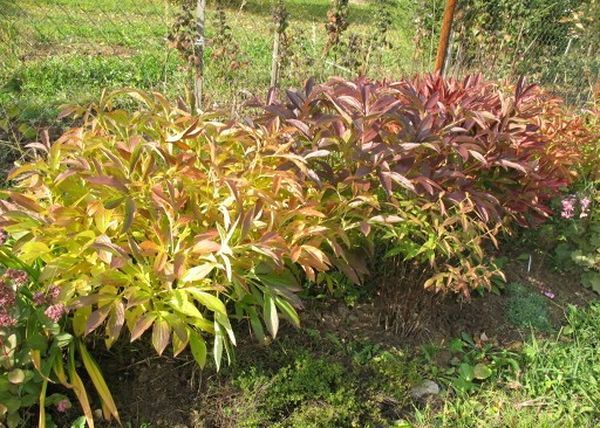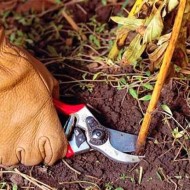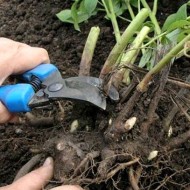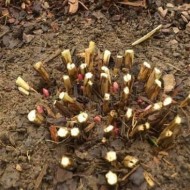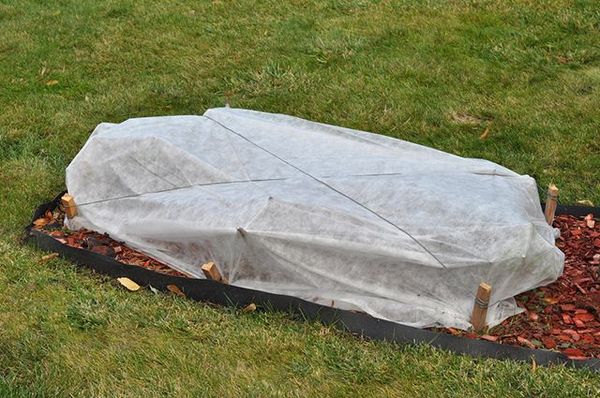Recommendations for effective preparation of peonies for winter
Content
Autumn range of works
It may seem to inexperienced growers that in the fall, when the active phase of the growing season of peonies has already been completed and the flower is preparing for a dormant period, no care measures are required. Naturally, some procedures end with the departure of summer, the number of watering is reduced, frequent loosening of the near-trunk zone and the destruction of weeds are not required. But experienced gardeners know that in the autumn, in addition to seasonal care, there are also preparatory winter procedures. From the beginning of September, the following procedures are usually carried out:
- feeding shrub varieties that continue to bloom;
- transplant (if necessary);
- autumn pruning;
- mulching the trunk circle.
It is in the fall that the number of watering is gradually reduced. It is important not to limit humidification too quickly: first reduce the amount of moisture with each watering, then reduce the frequency.
Video "Preparing peonies for winter"
In this video, you will learn how to properly prepare peonies for the winter period.
Preparing for frost
The preparatory stage for the winter period begins with pruning peonies and ends with insulation of the shrub, if necessary. For those who spend most of their time in the country, it is easy to allocate time for procedures. The main thing is not to miss the moment and carry out activities before frost.
Pruning
Pruning of plants is often carried over into the spring, considering the process of dying off of leaves and shoots as natural. It is difficult to dispute this fact - the flower is preparing for a dormant period. However, you cannot argue with the fact that withering foliage and inflorescences continue to draw juices from a living peony and are an ideal place for wintering various pests and fungal spores. That is why the sanitary removal of wilted, damaged and dying parts of the shrub is mandatory.
The first of the two pruning is carried out immediately after the end of flowering, removing only the dry parts. The second - after the first frost. This interval is due to the fact that the green leaves remaining on the bush continue to accumulate nutrients during photosynthesis, thereby helping the plant to nourish the root system and recover before wintering. Common herbaceous varieties are pruned almost at the root when they begin to creep along the ground. Treelike varieties are cut to 70-90 cm for the purpose of shaping.
The rejuvenating procedure is carried out every 10 years in order to renew the shoots. When pruning, it is important to avoid the following mistakes: remove parts of the plant too sooner or later, leave hemp more than 5 cm in size.Do not assume that high hemp will help the plant to winter successfully, the shrub is warmed for this, but they are quite capable of slowing down the growth and flowering of the peony ...
Subsequent feeding
Fertilizers are usually applied in late September or early October. However, the feeding time directly depends on the climatic conditions of the region, therefore it may vary.Feeding peonies does not have any characteristic features in comparison with other plants: nitrogen-containing fertilizers are not used, preference is given to mineral, phosphorus-potassium complexes. These fertilizers contribute to the root system in the accumulation of nutrients necessary for wintering.
Mineral fertilizers strengthen the root system of the peony, which in the next season has a beneficial effect on the size and color of the buds and the health of the plant as a whole. Top dressing is applied in dry and liquid form. In the dry season, fertilizers are diluted with water and poured directly under the roots so that the liquid does not fall on the neck of the plant. During the rainy season, it is better to use pellets.
Shelter tips
Severe frosts and drying winds can destroy the flower. Therefore, a shelter is simply necessary in regions with a harsh climate and scarce rainfall. Since the depth of the growth buds is not more than 6 cm, the first step is to spud the trimmed shrub. Then a layer of mulch is laid on top. You can mulch a peony with sawdust, high peat, spruce branches, humus or compost.
It is not recommended to use dry foliage, as pathogens and pest larvae can hide in it. Additional cover can be provided by a layer of snow.
A special approach to tree varieties
Preparing a tree peony for winter has its own characteristics, not only in the process of pruning, but also in terms of insulation. In most regions with not too harsh winters, tree peonies do not need to be covered. They perfectly tolerate temperatures up to 30 ° C when the ground freezes to a depth of 1 m.But it is recommended to cover young fragile bushes with a thick layer of peat (at least 20 cm), and put an inverted bucket on top.
Emphasis on regional characteristics
It is possible to prepare a peony for winter correctly only taking into account the climatic characteristics of the region. The regions of Siberia and the Urals are characterized by frosty winters, so shelter is a must. In this case, the bush is covered not only with peat, but also with buckets, cardboard boxes or large plastic containers.
For the Volga region, additional shelter, except for mulching, is not needed. In the conditions of the middle zone, in particular the Moscow region, where winters can be unpredictable, you need to decide how and how to cover peonies for the winter.
Frequent mistakes
Novice growers or ordinary summer residents can make a number of typical mistakes when preparing a shrub for winter. Omissions or errors in grooming can cost a flower a life. The most common mistakes are:
- Untimely pruning of the plant. Too early (before the arrival of the first severe frosts) will prevent the plant from accumulating useful substances necessary for wintering.
- Transferring sanitary cleaning of the bush. Leaving dry foliage is fraught with rapid reproduction of pests and the spread of fungal infections in the spring.
- Application of liquid fertilizers during the rainy season. Liquid top dressing in rainy weather is not completely absorbed.
- Wrong hiding place. Without taking into account the characteristic features of winters in the region, the use of natural materials, which can become a breeding ground for pathogens and pests.
Preparing a peony for winter is not the only condition for healthy growth and flower development. This requires a whole range of measures, including the correct planting and selection of a healthy seedling, as well as all seasonal procedures.

